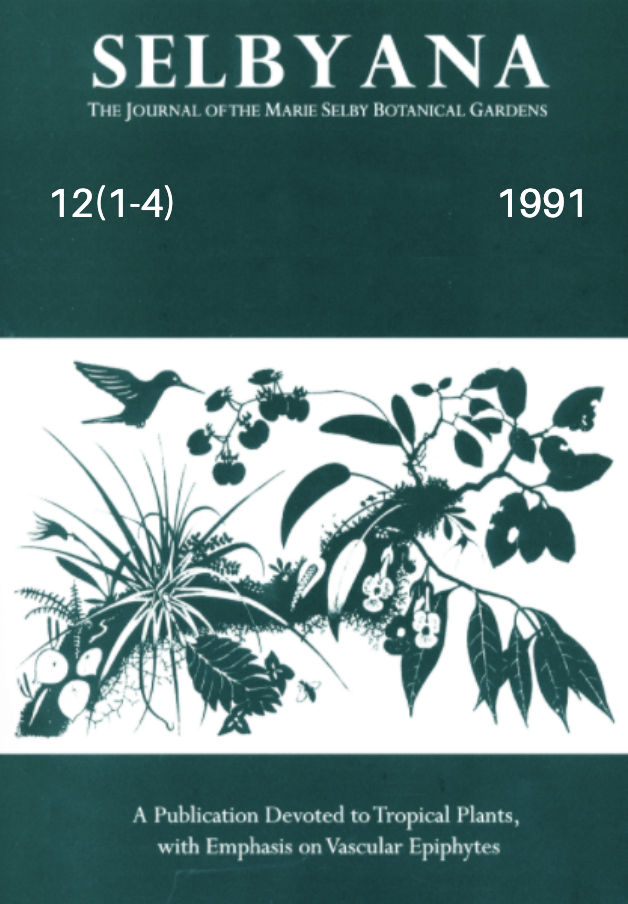Abstract
In 1934, M. Burret published a classification ofBaetris in which he segregated Guilielma and Pyrenoglyphis and in which he recognized two subgenera, four sections, and two subsections within Baetris s. str. His support ofGuilielma, which includes the edible species centered around B. gasipaes, has sustained a long-standing controversy. Herein, this classification is tested by applying parsimony-based cladistic analyses to 49 representative species-level OTU'S, scored for 106 characters, which were polarized by the outgroup genera, Astroearyum and Desmoncus. Baetris is monophyletic only ifneither Guilielma nor Pyrenoglyphis is segregated. Burret's subgenus and section Baetris are paraphyletic because his other taxa are nested within them. The cladistic analysis suggests there are four major clades, none ofwhich corresponds directly to Burret's groups. Three ofthe four are strongly supportedby autapomorphies. Because the interrelationships among the major clades are based on a few, homoplasious synapomorphies, segregation ofany clade is unwarranted. Several other well-marked constituent clades, some ofwhich correspond to Burret's groups, are nested within the major clades. The analysis reveals that Burret weighted too heavily certain characters and incorporated too few ofthe cladistica11y most reliable characters. The reliable characters are components ofdiverse organs but are concentrated in a suite associated with the fruits; they include: presence ofan ocrea, petiolar spines in three ranks, structure ofleaflet apices, structure ofrachis bracts and rachillae, arrangements ofthe reduced cincinni, structure ofstaminate petals and stamens, shape
and indument of pistillate corollas, presence of a staminodial ring, fruit shape, epicarp color, mesocarp
composition, endocarp shape, andthe structure and attachment ofendocarp fibers. The remaining characters
are consistent only at lower taxonomic levels and deserve more detailed analysis in future monographic
studies.
Open Access and Copyright Notice
Selbyana is committed to real and immediate open access for academic work. All of Selbyana's articles and reviews are free to access immediately upon publication. There are no author charges (APCs) prior to publication, and no charges for readers to download articles and reviews for their own scholarly use. To facilitate this, Selbyana depends on the financial backing of the Marie Selby Botanical Gardens, the hard work and dedication of its editorial team and advisory board, and the continuing support of its network of peer reviewers and partner institutions.
Authors are free to choose which open license they would like to use for their work. Our default license is the Creative Commons Attribution-NonCommercial 4.0 (CC BY-NC 4.0). While Selbyana’s articles can be copied by anyone for noncommercial purposes if proper credit is given, all materials are published under an open-access license with authors retaining full and permanent ownership of their work. The author grants Selbyana a perpetual, non-exclusive right to publish the work and to include it in other aggregations and indexes to achieve broader impact and visibility.
Authors are responsible for and required to ascertain that they are in possession of image rights for any and all photographs, illustrations, and figures included in their work or to obtain publication or reproduction rights from the rights holders. Contents of the journal will be registered with the Directory of Open Access Journals and similar repositories. Authors are encouraged to store their work elsewhere, for instance in institutional repositories or personal websites, including commercial sites such as academia.edu, to increase circulation (see The Effects of Open Access).
